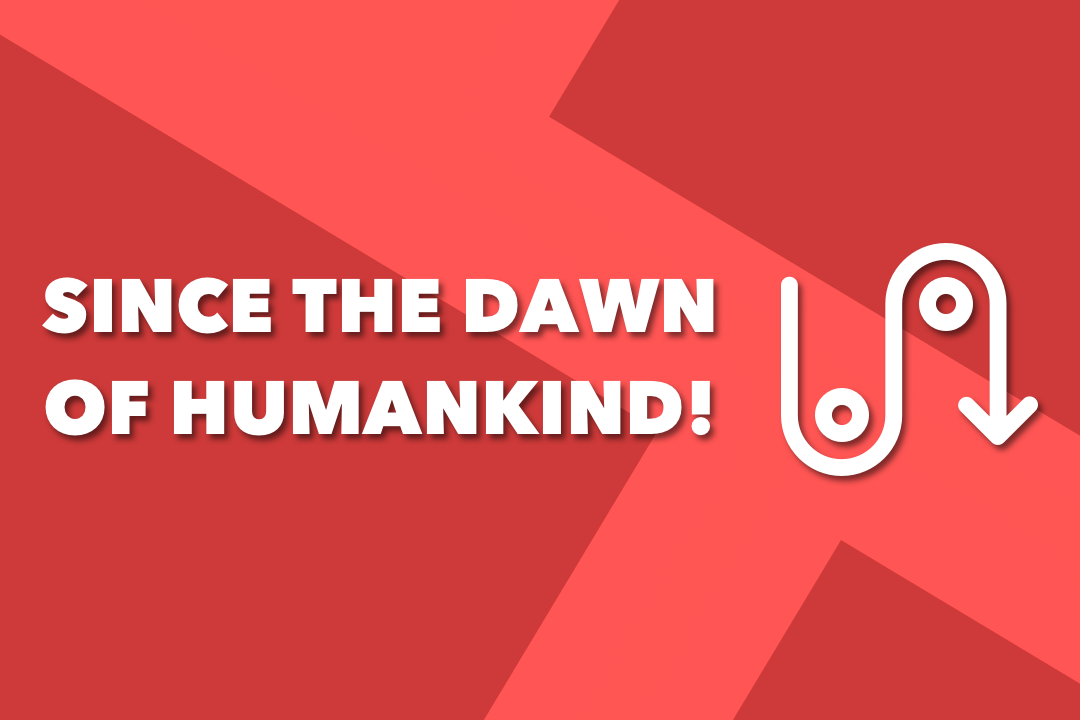
Commerce is a tricky concept that causes both wonderful and terrible events in humanity.
It is not only the exchange of goods and services but also the exchange of cultures, foods, and lifestyles. It is the reason for the discovery of America & India, globalization, European imperialism, the Industrial Revolution, the invention of money, political disagreements, wars, peace, and many more.
While commerce affects all these events, it is also affected and evaluated by them. Commerce has a history starting from the cattle trade and extending from shopping with mobile applications. Do you wonder how commerce got to this point, what events took place while it was developing? If yes, let’s read!
The Historical Development of Commerce
Commerce is almost in everything including politics, economics, technology, culture, society, and the legal system.
Besides, commerce can be applied to any transaction that requires products to be transported between places or from country to country. That is why if your business involves moving goods to consumers from producers, commerce is a part of all its institutions, functions, and activities.
Commerce has huge effects on all countries and communities. It has the power to improve the standards of living for a country's citizens and improve the political & economical power of countries.
Such a powerful concept has of course been developed and changed by humans throughout history. Commerce started with simple trade of goods or services and it evolved into complex buying and selling that is taking place online now. eCommerce provides shoppers the chance to shop whenever they want among countless options.
Commerce has gone through many journeys until it reached the eCommerce stage. The places where commerce activities are carried out and the methods used by merchants to achieve commerce activities have also changed a lot.
First, the barter method left its place to other methods such as cattle trade and trading shells. Then, coins were invented and they created markets where societies got together, they were meeting places for the people.
Following paper money & credit cards are invented and finally with the Internet eCommerce has been developed.
To learn the details about these stages, let’s check the below parts.
A. Bartering
Before the invention of money, to get some items they needed, people were exchanging the goods they have for other people’s items that they see of equal value. The aim was to create a mutual benefit for both sides.
These exchange activities are named bartering and the items that they were exchanging could be fish, fur, tools, weapons, etc.
B. 7th- 11th Century B.C.: Cattle Trade
You can think of the cattle trade as a type of bartering with cattle as trading goods on both sides. Cattle means a group of animals that includes cows, buffalo, and camels, which are often kept for their milk or meat. These were perfect goods to set clear prices and use in commerce.
C. 2nd Century B.C.: Trading Shells and Precious Materials
Cowrie shells are kinds of shells that are almost impossible to imitate, so they were perfect to use as practical money at those times. In fact, in China, during the Shang dynasty, the society was using cowrie shells as money in their commerce activities.
D. 7th Century B.C.: Invention of Money (Coins)

First coins were made of electrum and they were invented in Lydia(in Turkey at this moment) in the 7th century BC. Lydia was a major commercial hub and they needed a clear currency to use in their commercial activities. In other words, they invented money since they needed it.
E. 1st Century B.C.: The Silk Road
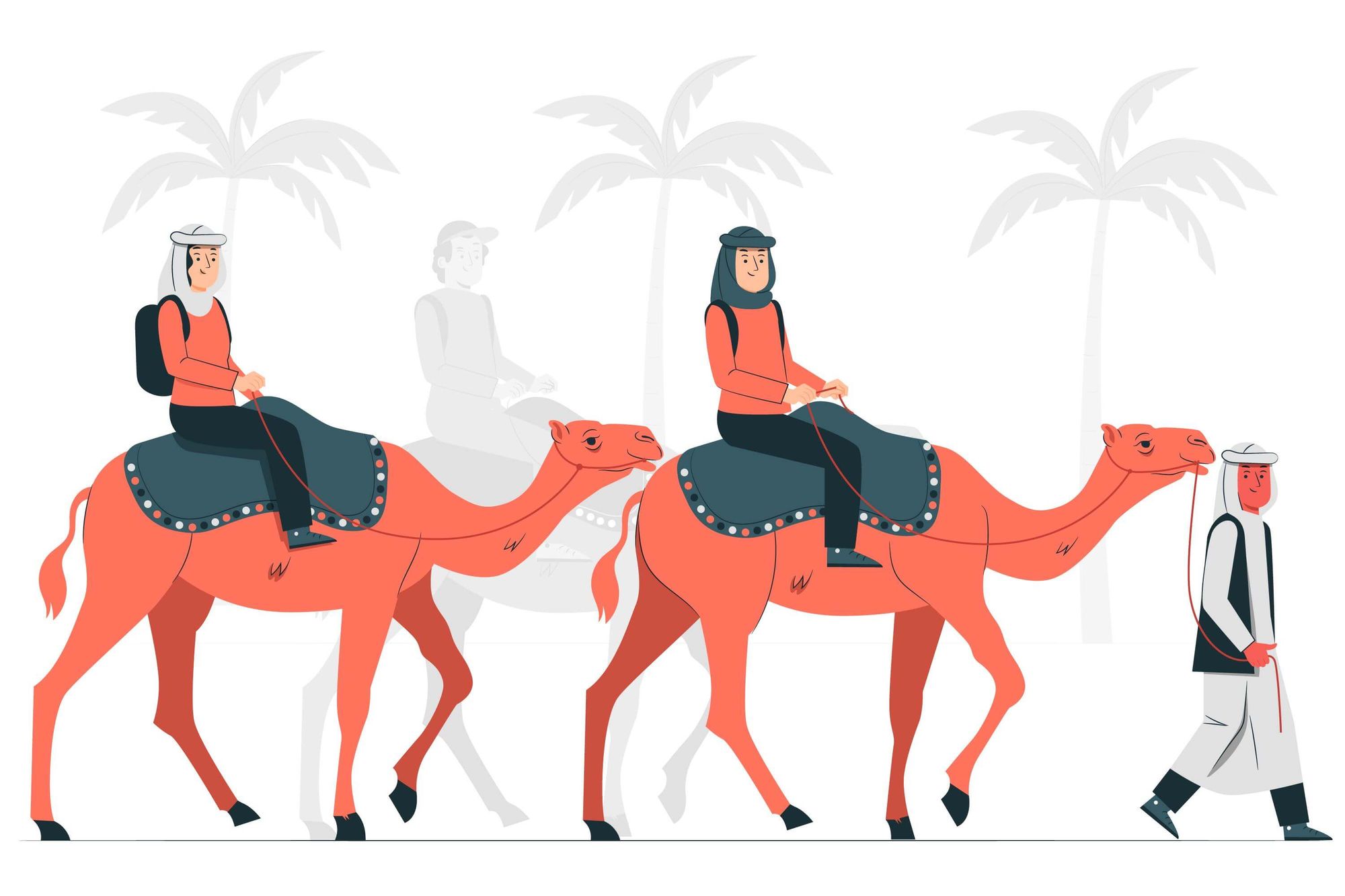
The Silk Road was the ancient trade route that started from China and extended to Europe through Anatolia and the Mediterranean. The Silk Road has not only been the route of merchants but also of sages, armies, ideas, religions, and cultures from East to West and West to East. In other words, it was a cultural exchange road transcontinentally.
On the Silk Road, besides silk, porcelain, paper, spices, and precious stones were also carried. Beyond being a trade route connecting Asia to Europe, the Silk Road also bears the traces of cultures, religions, and races that have lived in the region for 2000 years and offers an extraordinary historical and cultural richness.
F. Year Zero: Markets
Markets are the places where the buyers and sellers can gather to facilitate the exchange of goods and services. They are generally created in the center of the cities by the states. The main aim was to make economic activities and provide economic mobility.
They were daily and permanent markets that were determined by the city’s population, culture, geographic conditions, and needs. People were purchasing or selling provisions, livestock, foods, and other goods in those markets. We can also call these marketplaces bazaars.
G. 11th Century Development of Paper Money
The first paper currency was developed in the 11th century during the Song dynasty of China. The Song government wanted to control the system directly, and they achieved that by developing the first proper paper money.
It was almost 18 centuries later than the invention of metal coins. Paper money was so much easier to carry than coins, however, they brought the risks of counterfeiting and inflation. Yet, in 1265, paper money became the national currency of the Song government.
It was a revolution for merchants since they did not have to carry heavy coins in their commerce activities anymore.
H. 15th Century: Age of Exploration

Age of Exploration or Age of Discovery is the period that Europeans started to explore the world by using the sea road and discovering new trade routes including the discovery of America. With new regions, they also discovered wealth and knowledge.
Discoveries of new lands and routes were the rise of global trade, and it brought a wide transfer of plants, animals, food, and human populations (including slaves). States wanted to take more advantage of the new lands and the profit of global trade. That is why the rise of global trade also brought the adoption of colonialism by governments as policy in some European states.
The Age of Exploration was the rise of European trade and economy. During and after this period commerce activities became much more global.
I. 1821: Gold Standard System
It is a monetary system where a country's currency or paper money has a value directly linked to gold. Countries that use the gold standard system agreed to set a fixed price for gold and carried out buying and selling transactions at this price.
This fixed price was actually determining the value of the currency. For instance, if the U.S. sets the price of gold at $400 an ounce, the value of the dollar would be determined as 1/400th of an ounce of gold.
In 1931, Britain stopped using the gold standard system and in 1933 the US stopped, too. This is a system that is no longer used by any government.
J. The 1950s: Credit Cards
Credit cards are the ways to purchase goods and services at the moment and pay later. The first credit card was developed in 1950 by the Diners’ Club. Then 8 years later American Express developed its first credit card as a travel and entertainment card.
K. The 1960s: Electronic Data Interchange
Electronic Data Interchange(EDI) is the methodology of exchanging information from computer to computer. It enables the free flow of information between different businesses. We can say that Electronic Data Interchange is the foundation of eCommerce since it enabled the digital transfer of data of eCommerce businesses.
L. The 2000s: eCommerce Growth
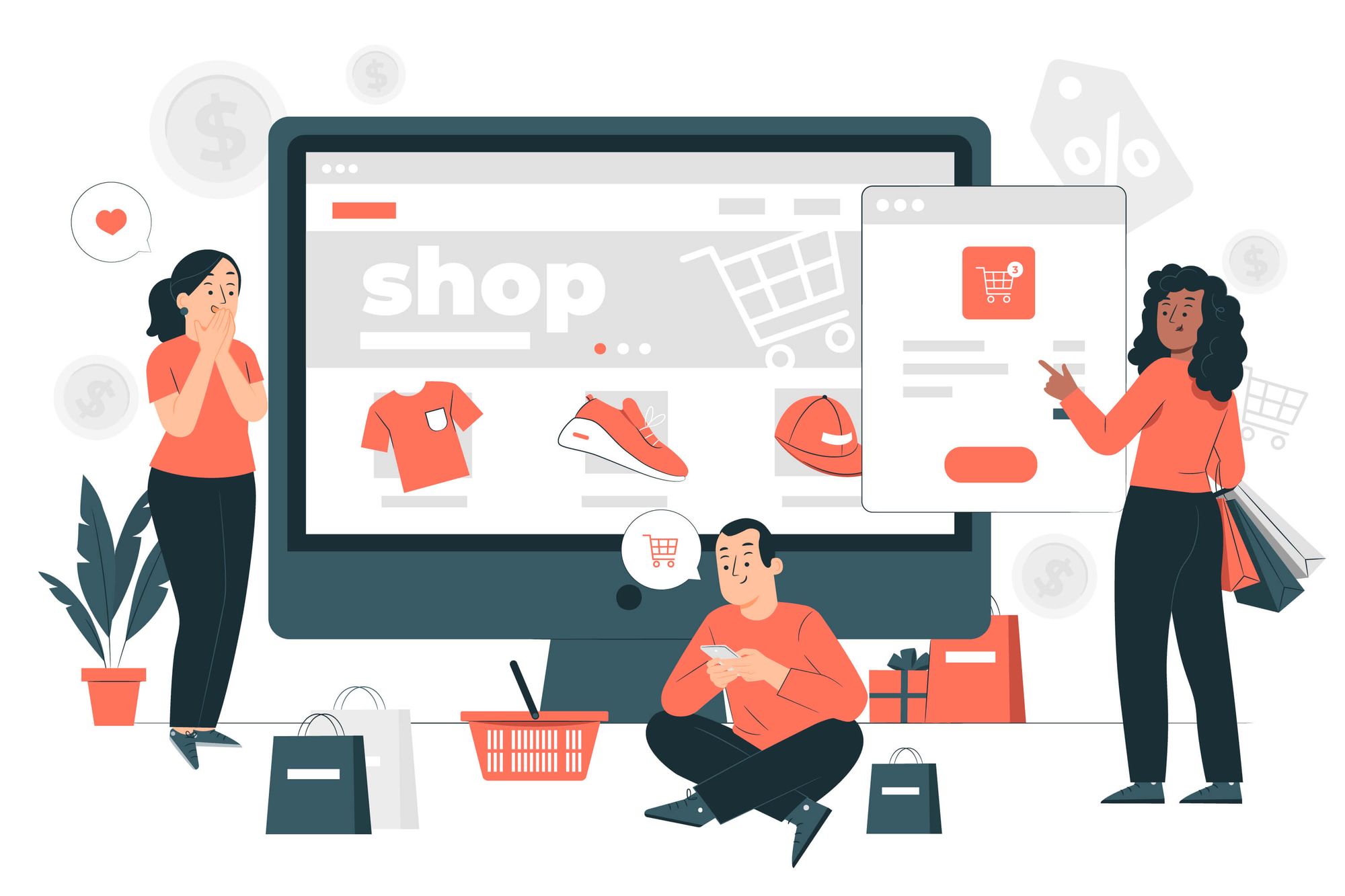
eCommerce (electronic commerce) is the buying and selling of products or services on the Internet. That is why the growth of eCommerce coincides with the spread of the Internet.
At the beginning of eCommerce, there were many concerns of shoppers regarding the safety of online shopping. That is why an encryption certificate which is named the development of a security protocol, Secure Socket Layers (SSL) was created in 1994. It was determining whether or not a site could be trusted by identifying whether a site had an authenticated SSL.
In 1995, Amazon was established as an online bookstore. It was the first eCommerce website. Then eBay followed Amazon.com and it became the most significant eCommerce website in this time. After them, thousands of other businesses followed them.
In 2001, Amazon launched its first mobile commerce site and introduced Amazon Prime in 2005.
M. Late 2000s: Easier to Build Online Stores
In the late 2000s, Shopify and other top eCommerce platforms were established and they made it so much easier to start an eCommerce website for merchants. Shopify was founded in 2006 and it reached 1,700,000 businesses in approximately 175 countries in 2021.
It is a platform that offers online merchants the services they need for their eCommerce business including payments, marketing, shipping, and customer engagement tools.
N. 2007: Mobile Apps Became Popular
With the first iPhone launch in 2007, mobile apps became more popular. In 2008, Apple introduced the App Store where Apple users can download mobile apps. It included a few thousand apps. Following Apple, the Android market has been launched in the same year.
2011 was the year that mobile app usage was more than mobile website use. And in 2023, 70% of all US digital media time comes from mobile apps.
The reason that mobile apps became so popular instead of mobile websites was being easy to use and provided a better UI/UX experience. eCommerce businesses also want to get their share from mobile app usage so they started turning their online stores into mobile apps.
If you also want to get your share from mobile app usage and adapt to the age of mobile commerce, you can turn your Shopify store into a mobile app in minutes with Shopney. In this article, you can find all the details about the process.

What Has Changed While Moving From Commerce to eCommerce?
In the early centuries of trade, markets functioned as a new meeting place. Where people used to coexist within their already determined familial, religious, and/or social communities, the trade brought people together from far and wide.
This exposure to new cultures, “products,” and ideas compounded the benefits of the trade itself, creating its own unique etching on the rock of history.
Integration of businesses with technology led to a revolution in commerce. Traditional ways of doing business transferred into eCommerce. eCommerce has entirely revolutionized the conventional thought of business, supported by a huge number of internet users & android/apple mobile phones.
Normally, before the revolution in commerce, it meant the trading of goods and services. Doing commerce & business during the Gen-X period was basically like a physical commercial activity with the involvement of many intermediaries to sell or exchange goods and services.
Recently, the revolution in commerce brought a new era of business known as eCommerce, paying cash took the new form of credit cards and electronic fund transfers. And the forms are changing faster than ever.
Let’s see together what has changed during the moving from commerce to eCommerce together.
1. Local Sales Decreased, International Sales Increased
Over time, commerce became eCommerce & conducting business globally has become an essential part of the overall strategy for many businesses.
For instance, U.S. businesses sold $1.1 trillion in goods to customers overseas in 2007, nearly double the total export volume of 2002. Imagine now with the technology we have in our hands!
People are now exploring giant eCommerce businesses on web & mobile devices. They decide what they truly need & have the chance of comparing the prices & quality.
They are not restricted anymore by the local stores to buy what they want or need. They even buy those items internationally and they can take advantage of the international sales.
Of course in the COVID-19 pandemic, we see the difference dramatically. As the lockdowns came into our lives, brick-and-mortar stores were almost over. We were much into the Internet & the stores around the world to shop.
2. Transfer Costs Decreased
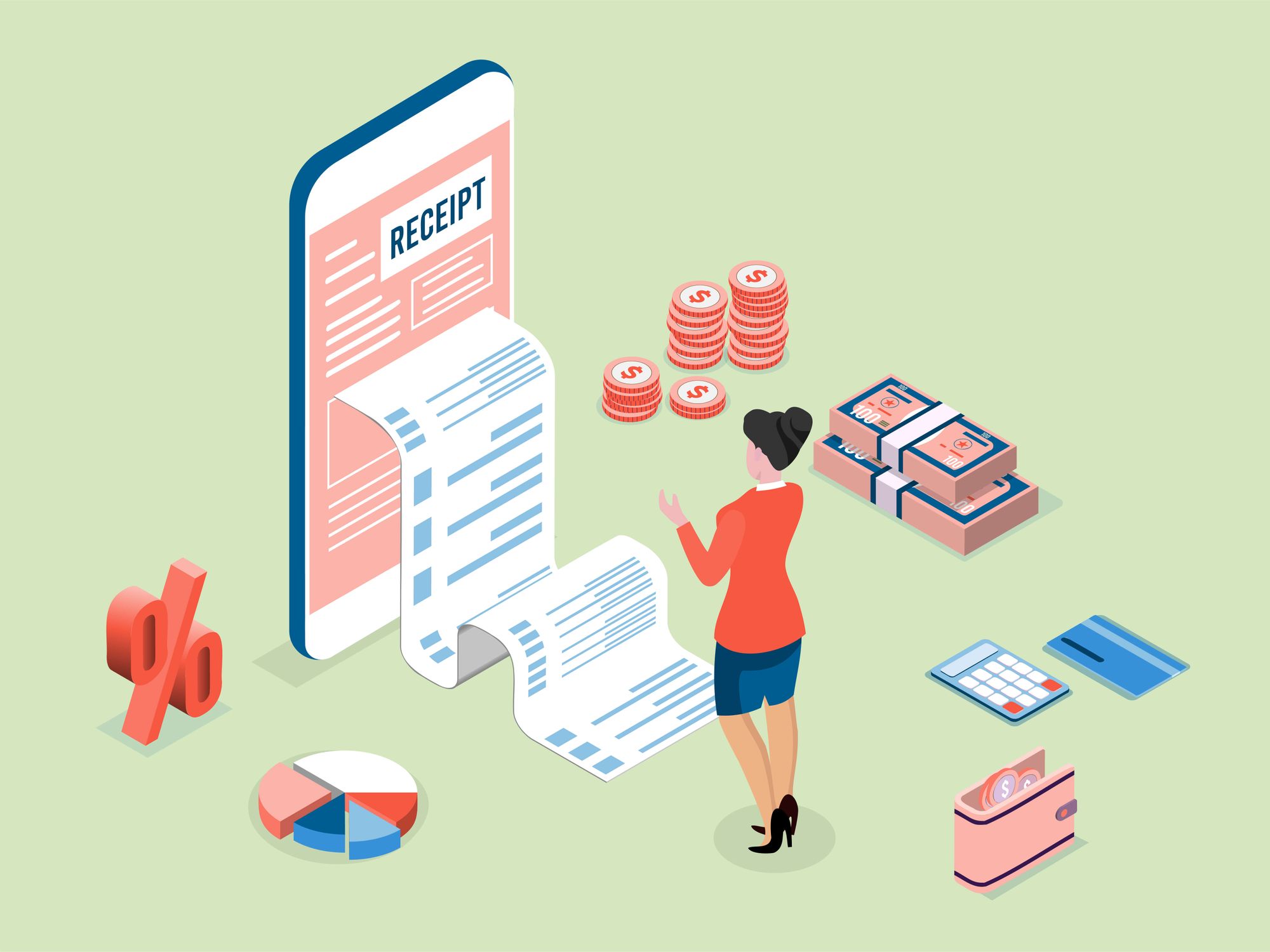
When physical stores calculate transaction costs, they have to factor in countless business expenditures along with the actual number of transactions.
When there are fewer transactions, the cost per transaction is naturally higher. On the other hand, transactions arriving in high quantities can overwhelm your personnel and distributors. In an eCommerce business/store, the transaction cost is the same across the board, whether one order or thousands come in.
Naturally, as the transaction cost is lower, the price of an item will be lower which will lead consumers to shop online rather than paying more in a physical store.
Additionally, an eCommerce business is able to reduce labor and other costs in many areas, including document preparation, reconciliation, mail preparation, telephone calls, data entry, overtime, and supervision expenses.
Having an eCommerce business can help manage operating costs in many areas, thereby reducing the cost of individual transactions. The use of email and electronic invoicing is a tremendous savings over the traditional methods.
3. Production and Marketing Centers Separated
In today’s cosmopolitan cities, it is very rare to find someone who is trying to sell a product that she produces by herself. Do you think was it like that in old times? The answer is a simple no. In the old times, the supply chain was much shorter than today.
Producers were also sellers and they were connecting with the consumers directly. For instance, people were trading with the cattle that they raised by themselves and the person they dealt with was the person who needed that cattle directly. In other words, commerce activities were mainly achieved as local sales.
Today, the supply chains are so much longer and a product goes through many stages before we receive it. For instance, now the supply chain of many products could include farming, refining, design, manufacturing, packaging, and transportation.
And at the end, products reach the marketing centers where they will be sold to the consumers. In other words, the food you consume or any other product changes hands many times until it reaches you.
4. Vertical and Horizontal Competition Increased
When we talk about competition, we are actually referring to horizontal competition which is between similar companies at the same level. However, there is also another type of competition that we don’t think about much: vertical competition.
Vertical competition occurs at each stage of a value chain where the contributors want to take advantage of these stages for themselves. It could happen during the manufacturing or delivery process, etc. Vertical competitors compete with each other on how much benefit they can get from the total.
In today’s world, both horizontal and vertical competition increased compared to the past. In the eCommerce world, since many businesses prefer to work globally, there could be thousands of online stores in your area, so you are competing with them horizontally.
At the same time, there will be so many processes and people between your production and consumer process, and vertical competition also so much increased when compared to the past.
5. Customer Trust & Satisfaction Still Comes First
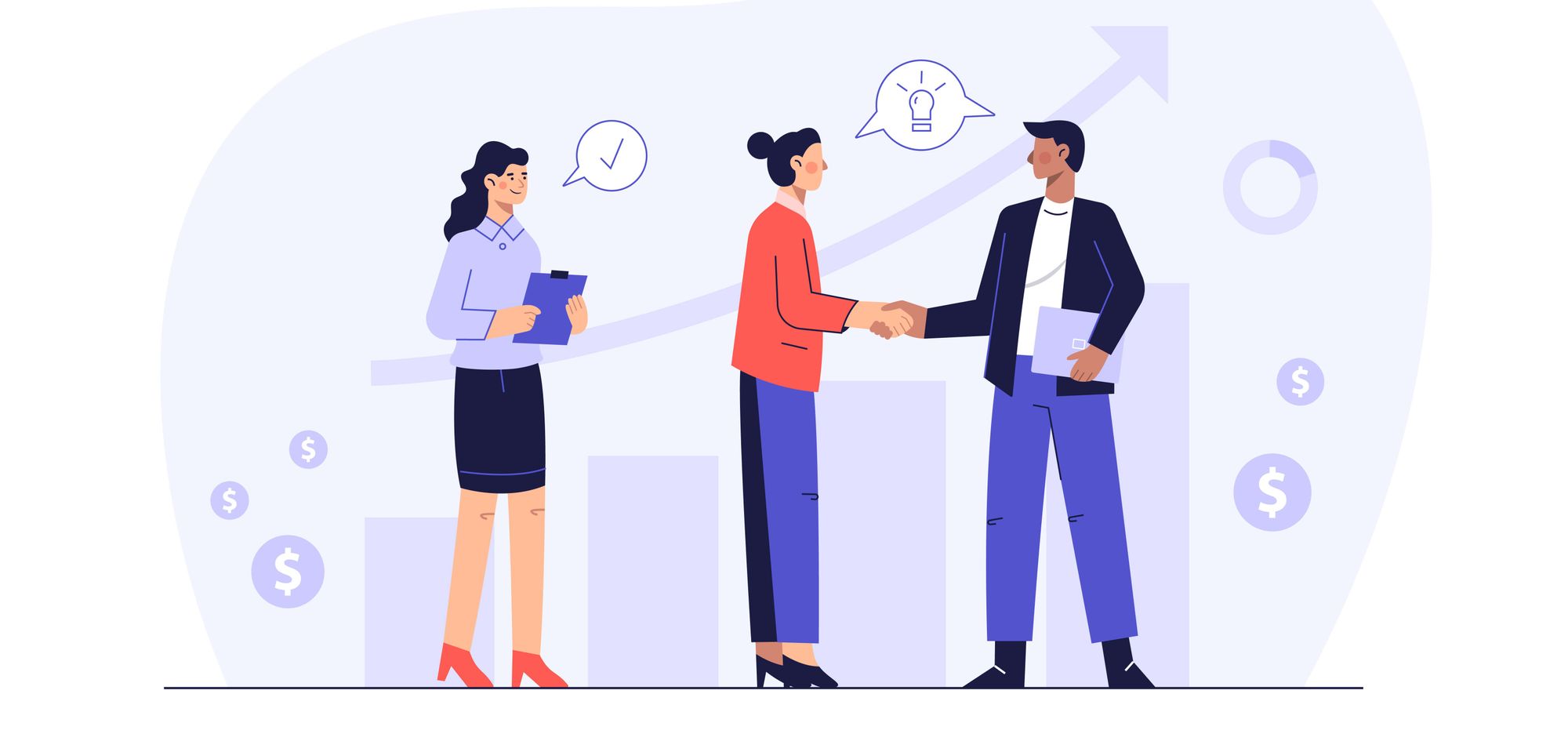
One of the things that have not changed about commerce history is that customer trust & satisfaction comes first. Trust is an essential component of economic behavior and decision-making.
If customers are not satisfied with the product or the service you offer, it is very difficult for them to buy from you again since it broke their trust.
On the other hand, if you provide a high-quality product & service it is highly possible that they shop from you again when they need a product that you sell. It is a situation that has not changed throughout trade history.
If they have not shopped before, what do they do to trust you enough to shop? In the old times, people were relying on the networks they were embedded in. When information is scarce, people tend to trade with known parties. It has not changed too much actually.
In today’s world, shoppers try to find the information to build trust by reading the store & product reviews online. Even if we are going to a new hairdresser, the first thing to do is to open the reviews on Google and check whether the previous customers like the service. It is a way to eliminate risks and build customer trust.
6. How We Sell is an Important Criterion
Imagine you have a great product. If you can’t show people how great your product is, would they purchase it? You should present it in the most impressive way to affect shoppers to purchase.
Or imagine you have a product that nobody knows about. How can you expect them to come, find you and then purchase? You should announce that you and your product are there. That is why how we sell and marketing activities are so crucial in commerce.
You should know your customers, identify their needs and create marketing strategies to affect potential customers. It is actually the same in both traditional commerce and eCommerce. The appearance of your eCommerce store is just as important as the appearance of your physical store.
The difference between past and today’s marketing activities is, that today they mostly rely on the Internet, in other words, paid ads and SEO activities. In a world where everyone became online shoppers, we couldn’t expect otherwise.
7. Customers' Interest in Discount
Have you ever heard of the concept of ‘homo economicus.’? It is a hypothetical person who behaves in exact accordance with their rational self-interest and it actually represents all humans. It is the assumption that humans are rational and will attempt to maximize their utility for both monetary and non-monetary gains.
So, to purchase from you, shoppers need to think this is a rational decision and it has been like this throughout history. Do you know what is one of the greatest ways to make them feel like that? Implementing time-limited product discounts!
If people know that they can get a product or service for a lower price than they would normally pay, they will be more willing to buy because they don't want to miss the chance. This is actually called FOMO which is the fear of missing out.

Final Thoughts
History and commerce have influenced and changed each other over time. The history of the world is also the history of commerce. There is this journey of commerce that starts with bartering and evolves into mobile commerce in a very long time.
We explained this journey stage by stage in our article above. The main point here is, that commerce has evolved and those who adapted its new forms were able to continue on their way.
In 2023, the new form of commerce is mobile commerce. In the US,%53 of all eCommerce sales are made through the mobile app.
You can build your own mobile app with Shopney- Shopify mobile app builder, provide the best mobile user experience to increase customer satisfaction, take advantage of these decades’ mobile app usage and get many other benefits. There is no need for any credit card information. Try 30 days for free from here.



